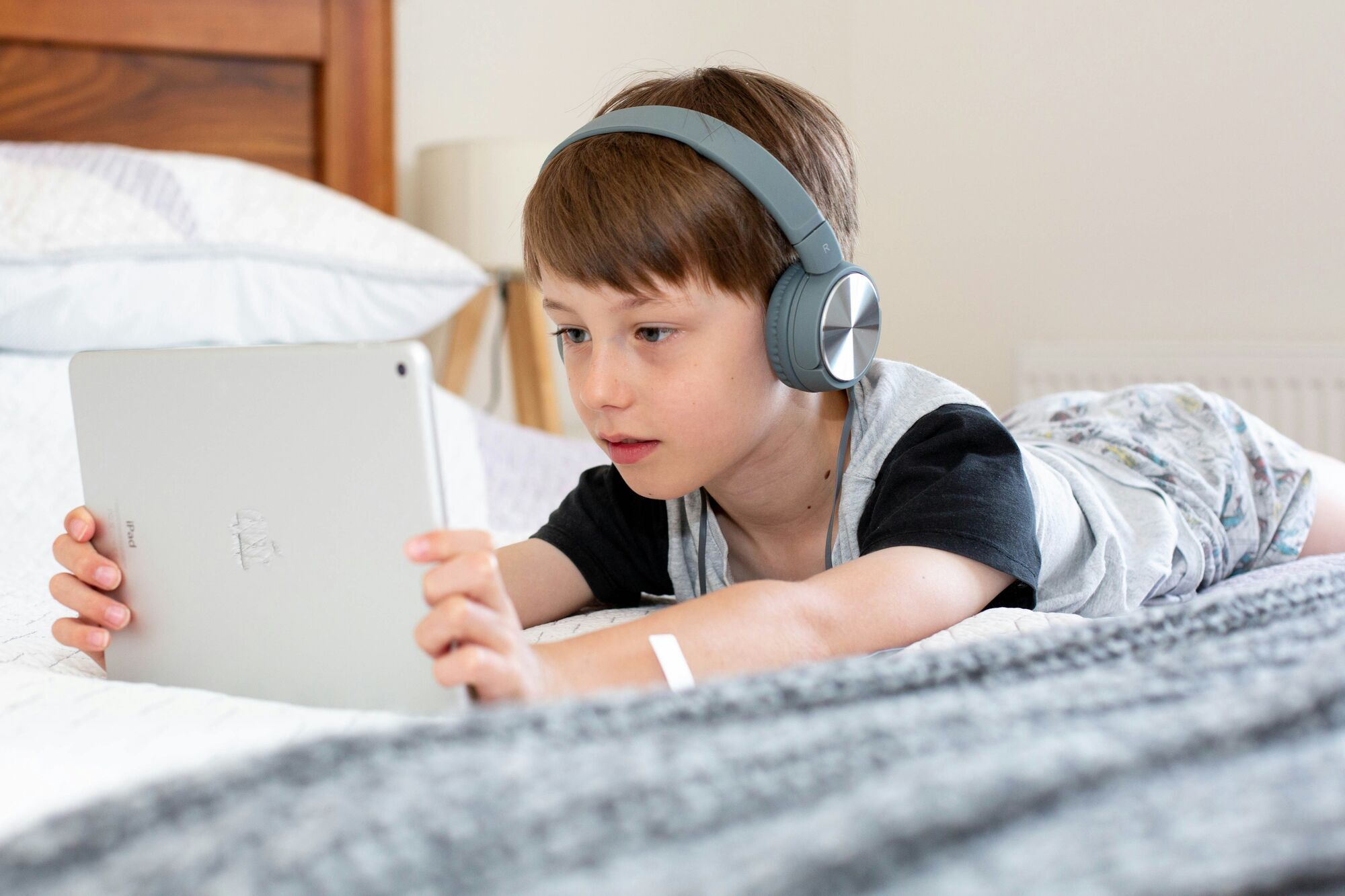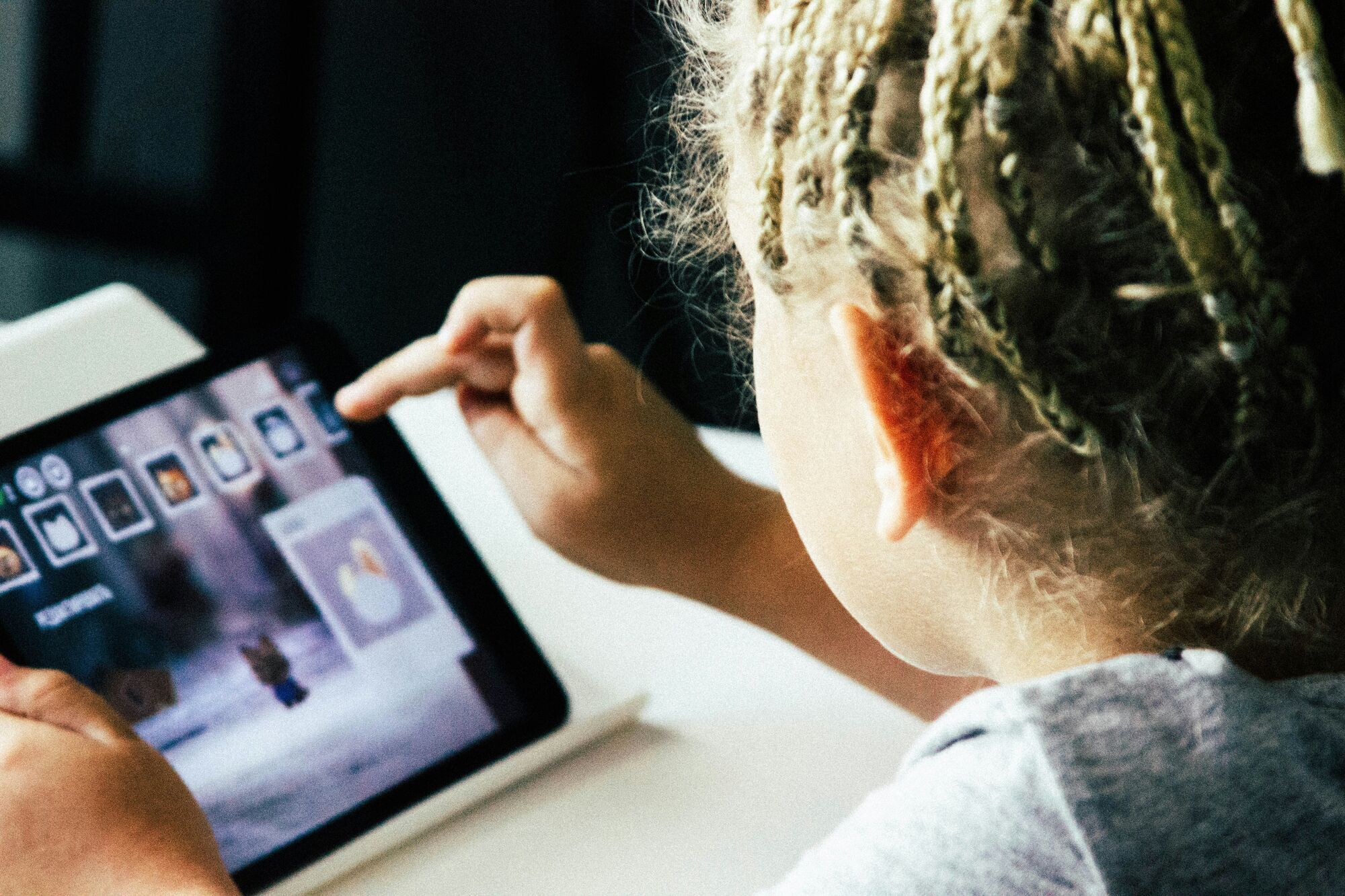Eating disorders, low self-esteem, anxiety — these can all be consequences of irresponsible gadget use in children. Why are children so susceptible to the online world, and how can we help them?
Anna Shatalova, a licensed specialist in dyslexia, dyscalculia, ADHD correction, a member of DDAI, neuropsychologist, and specialist in ASD correction.
One of the most common requests from parents today is for help with issues in their children's emotional and volitional spheres. A child can't control themselves; they're governed by emotions. They struggle to interact and make friends with peers, are overwhelmed by fears, and show aggression.
Another issue is the chase for social media ideals, especially among teenagers. This leads to plummeting self-esteem and eating disorders. The child becomes socially isolated and may fall victim to online harassment. Another major concern is the inability to monitor the type of content children are exposed to. Nowadays, even young schoolchildren are curious about pornographic websites, a curiosity that used to emerge only around the age of 13. In the pursuit of acceptance, children send each other nude photos and find themselves in uncomfortable situations they are afraid to tell their parents about.
What unites all these issues? Gadgets. Our lives are inseparable from technology, and while they certainly make things more convenient, children quickly become addicted to entertainment content and encounter online information they are not yet ready for. How does smartphone addiction hinder a child’s development, and what other dangers lurk in the digital space? More importantly, what can parents do?
The Dopamine Trap
Why do children develop gadget addiction?
The human brain is constantly in search of pleasure, whether it's tasty food or leisure time, and avoiding the unpleasant — work, studying, or diet food. The brain conserves its resources because it's the most “energy-consuming” organ in the body (our brain burns 15-20% of the calories we consume).
Learning is one of the most energy-intensive processes. It requires voluntary attention, where one must understand the task and begin looking for solutions. This process is draining for children, even if the program includes playful elements. As children grow older, their brains must process increasing amounts of information throughout the school day.
Low-content videos, games, and social media feeds do not require the engagement of voluntary attention. Such content can be consumed without activating the brain's processing mechanisms — no need to collect and analyze information or look for solutions. The key aspect is that it provides a quick and easy way to get dopamine.
Dopamine is a chemical in the brain often called the “pleasure hormone.” It plays a key role in our sense of satisfaction and motivation. Gadgets trigger particularly strong dopamine release for several reasons:
- Unpredictable rewards: Likes, wins, and game rewards offer potent stimulation.
- Social interaction: Comments and messages on social networks give a sense of approval and belonging.
- Novelty and variety of content: The brain craves novelty, and rapid information flow satisfies this need.
- Instant gratification: Fast content can satisfy curiosity instantly.
- Positive associations: The brain quickly remembers how good it felt and anticipates future dopamine releases.
When using gadgets for entertainment, the brain isn't working, but simply receiving dopamine. No need to spend energy solving complex tasks or learning something new — dopamine is right in your pocket, available anytime. The brain starts craving these easily accessible doses and, over time, develops an addiction.
How Does Gadget Addiction Hinder Development?
The digital environment is evolutionarily unsuitable for a child's development. Simply put, two-thirds of our brain work on movement, and only one-third on thoughts and emotions. That’s why problems are more easily solved through physical activity, where new approaches are created, and dopamine is also released.
Development happens through constant physical contact with tangible objects. You've likely heard about fine and gross motor skills — that’s all about movement! Children need to climb, fall, bump into furniture, and pedal a bicycle. This rich kinesthetic and tactile experience helps the brain develop a sense of space and volume. The more of this experience, the better, as it trains the parietal cortex, where information from the visual cortex converges with deep and surface sensitivity from all parts of the body. This integration creates a sense of space, volume, and proportions. In early childhood, this aids coordination and physical development; in school age, it helps with abstract spatial thinking: algebra, geometry, and physics. In other words, the richness and diversity of life experiences shape all of our future abilities.
When staring at a screen, the brain doesn’t develop because only the visual analyzer is active, while the rest of the brain “rests.” If a child spends a lot of time with gadgets, the unused neural assemblies gradually atrophy.
Psychiatrist Gary Small, a researcher on early dementia and Alzheimer’s, and an author on memory and cognitive health, showed in his research that children excessively involved in video games experience a reduction in neural pathways in the frontal cortex. These pathways are responsible for volitional processes, through which a child learns, plans, and exercises self-control.
Some may wonder: what about educational content? Is it part of screen time that should be controlled, or is it relatively safe? It’s important to understand that educational content shouldn’t be limited to watching videos. Without discussion, accompanying conversation, project work on the topic, and other methods of processing the information, the material won’t be retained for long. What isn't used is lost. However, educational content can be genuinely useful and doesn’t fall under entertainment screen time. Gadgets, in themselves, aren't evil, but very convenient tools when used correctly. There's a big difference between learning, researching information, solving practical tasks, and watching viral TikToks.
The Danger of the Internet: From Anxiety to Violence
We should pay special attention to the type of content children consume online. Besides directly affecting the child’s brain — forming dopamine addiction and disrupting neural connections — the information itself can become a source of problems. Let’s explore the most common examples and their consequences.
Increased Anxiety
Increased anxiety is a result of excessive screen time, not only in children but in adults as well, particularly in relation to social media. You’ve probably noticed this effect in yourself by the evening.
Our brain has a special group of neurons — the mirror neuron system — responsible for understanding others' emotions and intentions, constructing their world image in our heads, and predicting their actions. In social media interactions, the mirror neuron system can only guess the other person’s intentions. The brain can't explain the motives of others or predict their actions because we don’t see their eyes, facial expressions, or other non-verbal cues. As a result, anxiety arises.
Another reason for heightened anxiety is information “overdose,” which leads to nervous system exhaustion. The brain gets tired of consuming too much information.
Imagine you’ve overeaten during lunch and feel discomfort in your stomach. Anxiety is the same physiological signal that the body is overwhelmed.
Unattainable Ideals
As children grow, they try out different identities, both behavioral and external: changing hairstyles, hobbies, and style. They gauge the reaction of their reference group (friends and classmates) through their mirror neurons and form their own identity in harmony with themselves and their reference group. This is a natural developmental path, where real-life friendships prevail.
However, when a child’s understanding of what others like is formed in the virtual world, the concept of harmony is replaced by unattainable images. Even adults often fail to realize that the perfect images shown on social media are unrealistic. You might have noticed feelings of inadequacy after scrolling through Instagram stories, where flawlessly successful people seem to have it all — running a business, being great parents, and working out daily. But this is just a picture they present to the world. If even adults lack the critical thinking to see through it, how can children?
Children frequently compare themselves to others based on appearance. Unrealistic influencer examples on social media can cause body image issues, low self-esteem, and eating disorders. Especially when they don't receive the desired feedback on their own content. Children crave peer approval and dopamine. Instagram likes are a quick way to get both, while their absence is another reason to worry, thinking, “What’s wrong with me?”
Self-esteem and eating disorders are serious problems that often require professional help and can lead to social isolation in children.
Cyberbullying (Digital Aggression)
According to a 2023 study by the Cyberbullying Research Center, a record 54.6% of surveyed US schoolchildren reported experiencing insults or harassment online. Since 2019, the number of cyberbullying victims among American schoolchildren has been growing by about 5% annually. The most common platforms for online harassment are YouTube, Snapchat, TikTok, and Facebook. In European countries, cyberbullying is not as widespread a problem but is emerging as a new tool for causing harm.
Like bullying in real life, online bullying traumatizes a child and leads to issues with self-esteem and behavior. Cyberbullying has several characteristics that put victims in particularly vulnerable positions: a large audience reach, increased cruelty due to anonymity, and difficulties with control and intervention.
The most effective way to combat cyberbullying is through close support. It's crucial to have a trusting relationship with the child so they feel comfortable telling you about the situation, even if they're embarrassed or ashamed. The child must not only feel but know that, no matter what, you’re on their side.
Without support from close ones, the risk of self-harm and suicide increases. Unfortunately, suicide remains the second leading cause of death among young people aged 10-24. So, if your child has encountered bullying online or in real life, the first thing you should do is offer complete acceptance. The second is to suggest meeting with a psychologist.
Pornography and violence
If a few years ago, children aged 13 and older were interested in porn sites, now the threshold has dropped to 8 years. In the US, 42% of children aged 10 to 17 reported that they had seen pornographic materials on the Internet. According to various studies, 19% to 37% of teenagers searched for such content intentionally, while 35% to 66% encountered it by accident. This is not difficult, because up to 30% of all content on the global network is related to pornography. A third of all Internet users, including adults, have at least once unintentionally become consumers of such content — through pop-up ads, phishing emails and other means. As for the deliberate consumption of pornographic content, the most popular sites with such materials are far ahead in the number of views of video services such as Amazon and Netflix, as well as TikTok and Zoom. In fact, today pornography has become one of the sources of sexual education for children.
At the same time, up to 45% of videos on the most popular pornographic resources contain scenes of violence. In 97% of cases, this violence is directed at women. An analysis of the 50 most popular pornographic videos several years ago also found that more than 88% of the scenes in them are scenes related to physical violence.
This source of sex education forms incorrect attitudes in teenagers' ideas about sex, distorts the perception of sex and intimacy, and also forms a tendency to get excited by more violent and perverted sex.
As a result of such wide availability of pornographic content, sexting has also become younger. Today, children send each other nude photos from the age of 10-11. In pursuit of recognition and easy dopamine, children fall into traps. After all, the recipient of the photo can share it with classmates or post it online, which will make the child the object of ridicule and bullying. In addition, on the other side of the screen may not be his peer, but an adult.
How can we minimize risks?
Confrontation with things a child is unprepared for can have devastating consequences for their psyche. It is essential to work with any information, but sometimes the information obtained online can be overwhelming and difficult to process. If you have a trusting relationship with your child, discuss what they see online and what they might encounter. Don’t shy away from conversations about pornography: it’s better for the child to learn about the likelihood of encountering such content online and how to respond to it from you than to face it unprepared. Trusting relationships, as mentioned earlier, are crucial for the child to come to you for help if they encounter online bullying or find themselves in another unpleasant situation (for example, being persuaded to send a nude photo). In such situations, it is vital to show maximum understanding and acceptance and not to blame the child.
What can help protect a child from gadget addiction and dangerous online content?
↪︎ Friendship
Adults who demonstrate the value and pleasure of friendship lay the foundation for the child's social skills from birth.
↪︎ Reducing entertainment screen time for the whole family
Regulating the time spent on gadgets helps prevent nervous system exhaustion and improves the child’s overall mental and physical health. Agree on how much time they can spend daily on entertainment content.
↪︎ Acceptance and support from adults
Adults who create an atmosphere of support and safety at home help children feel protected and confident, which reduces the need to seek comfort and encouragement online.
↪︎ Family activities
Joint trips, board games, discussions, and other activities strengthen family bonds and decrease the need for gadgets for entertainment and communication.
↪︎ Developmental activities
Try to find creative or sports hobbies that suit your child. Such activities will nurture their interests and abilities while distracting them from excessive gadget use.
↪︎ Conversations about online safety
Regularly talk to children about the rules of safe behavior online and explain potential threats. This will help children be more cautious and aware of risks.
↪︎ Monitoring and access restrictions
Using parental control programs and setting up content filters helps protect children from unwanted information, such as pornography.
↪︎ Leading by example
Adults who demonstrate healthy and mindful gadget usage through their own example help children develop the right digital habits. It is challenging to demand that a child spend less time on their smartphone if you don’t put yours down.
↪︎ Encouraging active leisure
Outdoor walks, family sports activities, and outdoor games contribute to the development of the child's brain and their emotional well-being.
Remember: we cannot and should not isolate children from gadgets and the digital environment. It is our direct responsibility to teach them to use it functionally.














